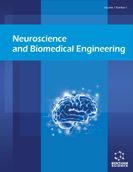Abstract
Background: Various combinations of Japanese sound symbolic words are produced by reduplicating the word stem, adding /Q/, /N/, /R/ and /ri/ to the word stem, or inserting /Q/, /N/, /R/ and /ri/ into the word stem. Ono (2007) notes there is a systematic rule for attaching /Q/, /N/, /R/, and /ri/ to the end of a word stem, and the word form can be extended until it becomes a form ending in "-Q".
Objective: It has been noted that there are many words that are not listed in dictionaries as one of the characteristics of sound symbolic words. This paper examines the specific characteristics of sound symbolic words, focusing on /Q/, /N/, /R/ and /ri/. Methods: Sound symbolic words which are used in current Japanese were searched in the dictionary, "Kurasi-no Kotoba: Gion/Gitaigo Jiten." There are 2,030 Sound symbolic words in total in the dictionary and 1977 words out of them were examined in this paper. Results: Four hundred six sound symbolic words, equivalent to 1/5 of the entire listing, were not listed in the "Nihon Kokugo Daijiten". From here, we will examine whether certain patterns exist among the words not listed in the "Nihon Kokugo Daijiten". Conclusion: One pattern is a word form with more than two elements, especially where the word ends with "RQ" and "RN". Another is a form with a single end word of /Q/, such as "ABQ", and a reduplication type word form, "ABABQ". There are many word forms ending with element /Q/, followed by /N/; however, there are only a few with word forms ending with /R/ or /ri/. These word forms include many types that contain the element /Q/. Not only does this pattern simply emphasize speed or momentum, it also emphasizes a strong colloquial tone and may even create a vulgar impression.Keywords: Japanese onomatopoeia, sound symbolic words, dictionary, word form, word stem, geminate consonant.
Graphical Abstract
 3
3

